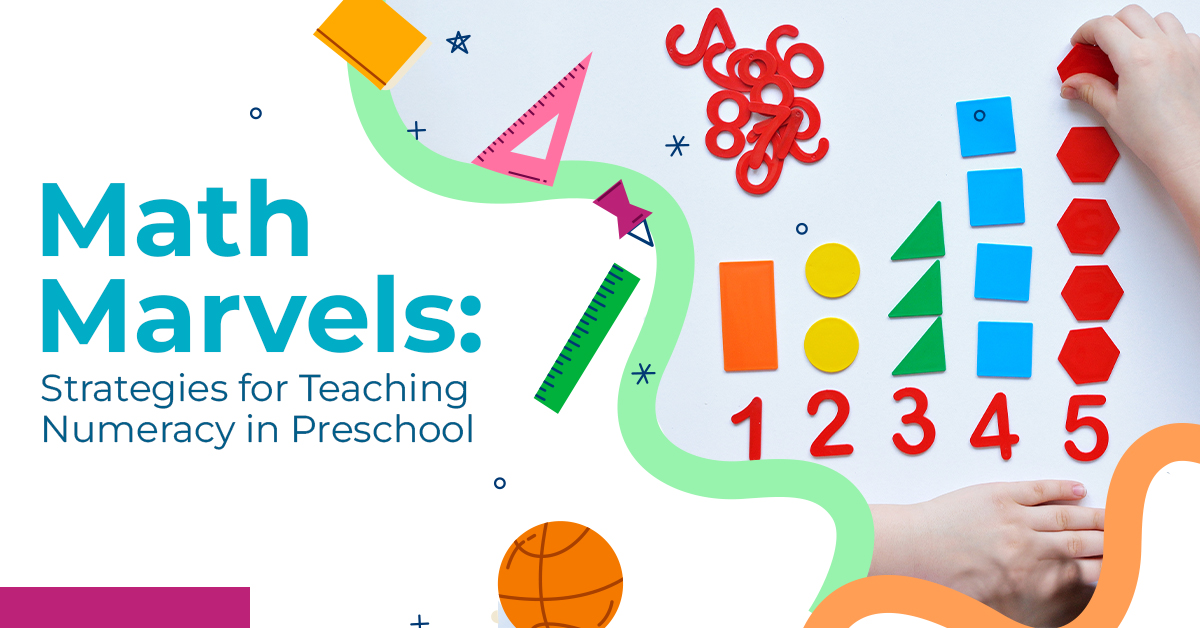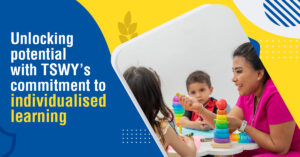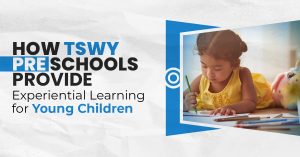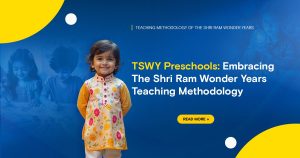Teaching Numeracy in Preschool is an essential period in a child’s life for forming the fundamental understanding of math—‘number sense.’ Few things can be as beneficial as developing math skills at an early age. Far from just introducing numbers and counting, preschool math education sets the stage for a lifetime of mathematical proficiency. Let’s explore some strategies TSWY uses to transform young learners into math marvels.
Table of Contents
- Making Math Part of Daily Routine: Teaching Numeracy in Preschool
- 1.1 Using Visual Aids for Adding Math
- 1.2 Use a Lighter Mood: Teaching Numeracy in Preschool
- 1.3 Rely Heavily on Patterns and Sequencing
- 1.4 Encourage Singing and Counting
- 1.5 Encourage Measurement from a Play Perspective
- 1.6 Relate Math Concepts to Real-Life Situations
- 1.7 Differentiate Teaching
- A Final Thought on Teaching Numeracy in Preschool
Making Math Part of Daily Routine: Teaching Numeracy in Preschool
Involve math in children’s everyday activities. Sorting by shape and size during snacks or while counting toys during play can pique a child’s interest. Participating in math learning has a positive impact on a child.
Using Visual Aids for Adding Math
Preschoolers love interacting with their surroundings, and making manipulatives is an excellent way to teach maths to preschoolers. Colorful charts and counting objects also work well. Since these students are still learning concepts, objects aid in the hands-on experience of the subject to facilitate the tangible learning experience.
Use a Lighter Mood: Teaching Numeracy in Preschool
Spell out all the activities that preschool children are required to do in school through laughter. Mathematics does not have to be boring to preschoolers. So, integrate, e.g., games and puzzles in them and teach children how to count numbers.
Rely Heavily on Patterns and Sequencing
Teach the preschoolers the concept of patterns and their sequences. Teach them how to identify and create simple patterns. Children with complex mathematical skills usually have the ability to arrange blocks and perform other basic skills, like sequentially numbering their daily activities.
Encourage Singing and Counting
Every primary class should include counting songs. Songs combine numbering and counting into a single pleasurable activity. Make praise-able rhymes for counting and demonstrate the numbers with your fingers. Adding music during the teaching of early mathematics is great.
Encourage Measurement from a Play Perspective
Versatile Children get to learn and understand new lessons that are entirely different from the things all around them. Focus on play-sand and water to remove the fear of teaching young children measuring units.
Use hands-on activities like measuring how big an object is, how heavy it is when sand or water is poured on it, and how much space it occupies in a container filled with water.
Relate Math Concepts to Real-Life Situations
Make it a point to show students how they can apply math concepts in real life. Help them tell time during activities, measure quantities when cooking or serving snacks, and point out shapes in the environment. Relating a child’s mathematical understanding to their daily life helps them appreciate its importance and scope.
Differentiate Teaching
Understanding that not all students learn the same way is crucial. For example, some students may realize numbers better if they are shown, while others may grasp them better through actions. To achieve differentiated instruction, it is essential to pay attention to each child’s unique characteristics so that every child can master self-paced learning.
A Final Thought on Teaching Numeracy in Preschool
Teaching numeracy in preschool is more than equipping preschoolers with mathematical skills. It involves fostering a positive disposition toward mathematics confidently. Educators can set the stage for future math wizards by integrating math into daily activities, employing visual aids, encouraging play, placing focus on patterns, adding music, measuring through hands-on activities, connecting math to real life, and differentiating instruction. The objective is clear: Preschoolers should understand that numeracy is the gateway, not the endpoint, to exploring the captivating realm of mathematics.
To continue nurturing a love for learning beyond numeracy, explore how TSWY Preschool creates a joyful and enriching early learning environment.
👉 How to Support Your Child’s Love for Learning with TSWY Preschool





